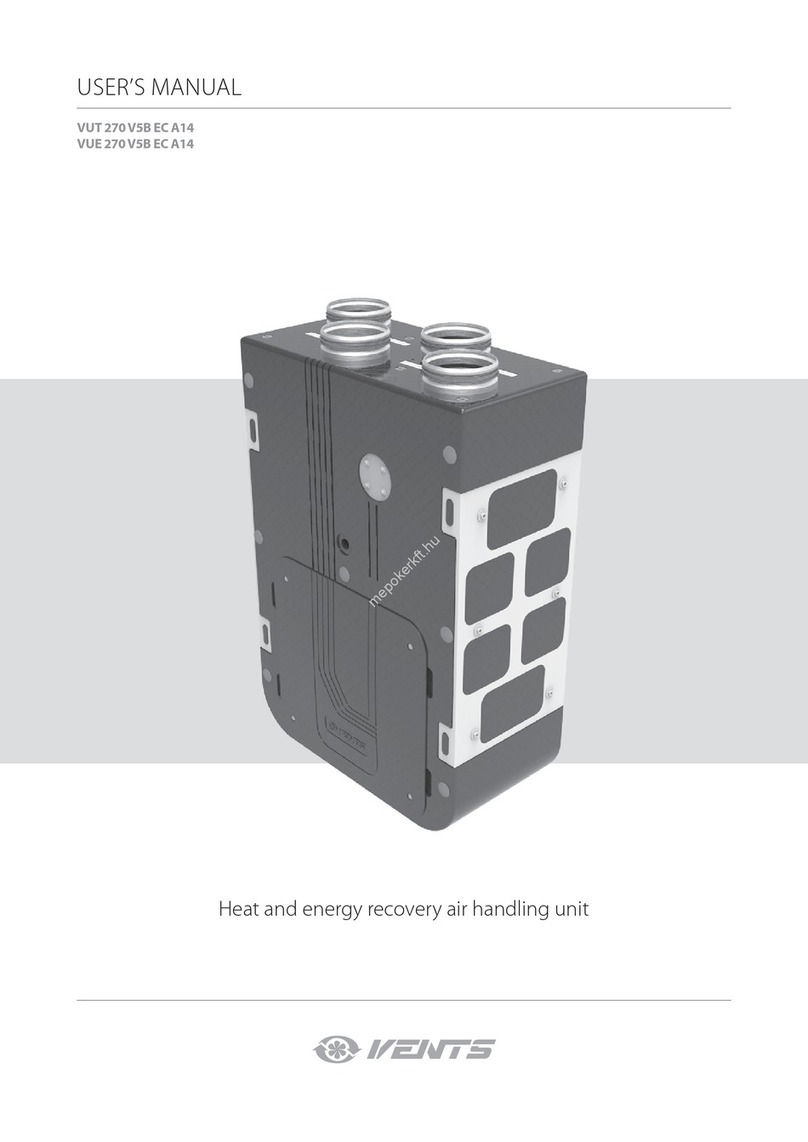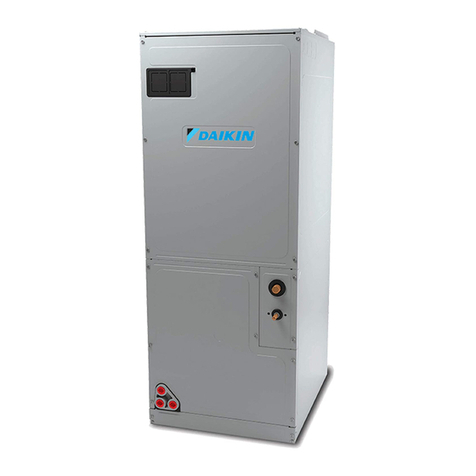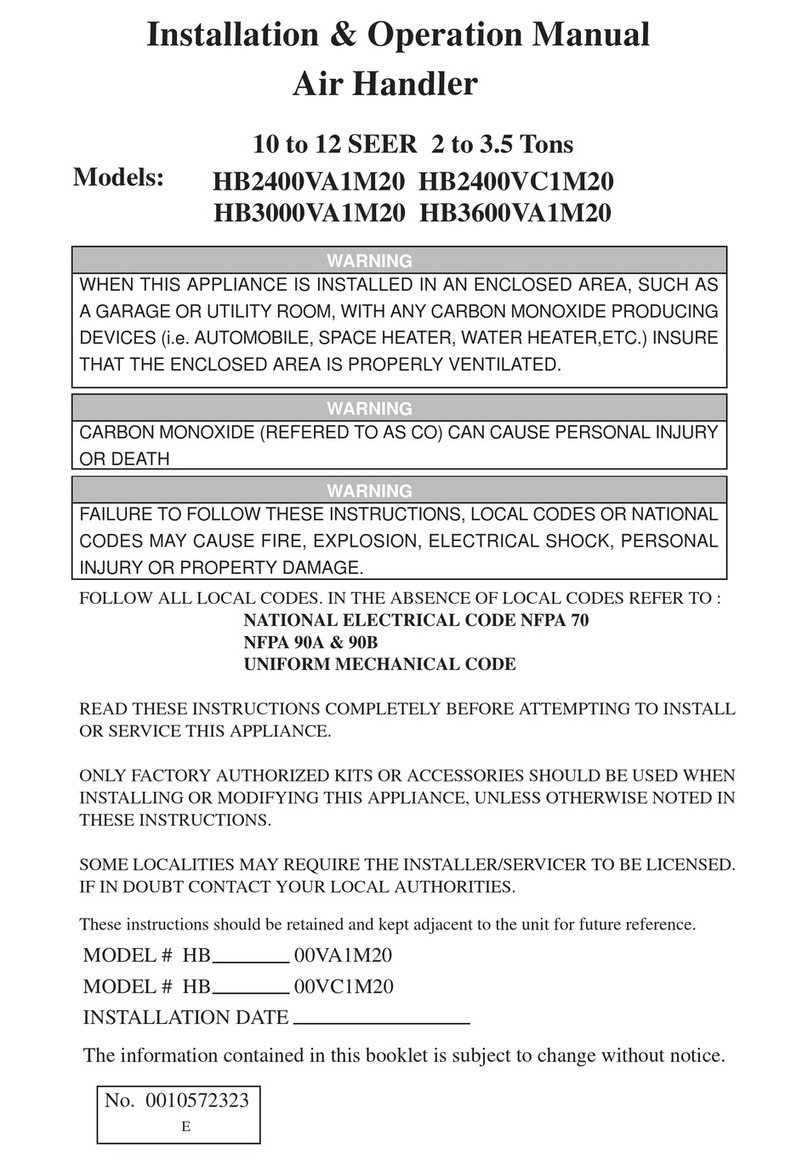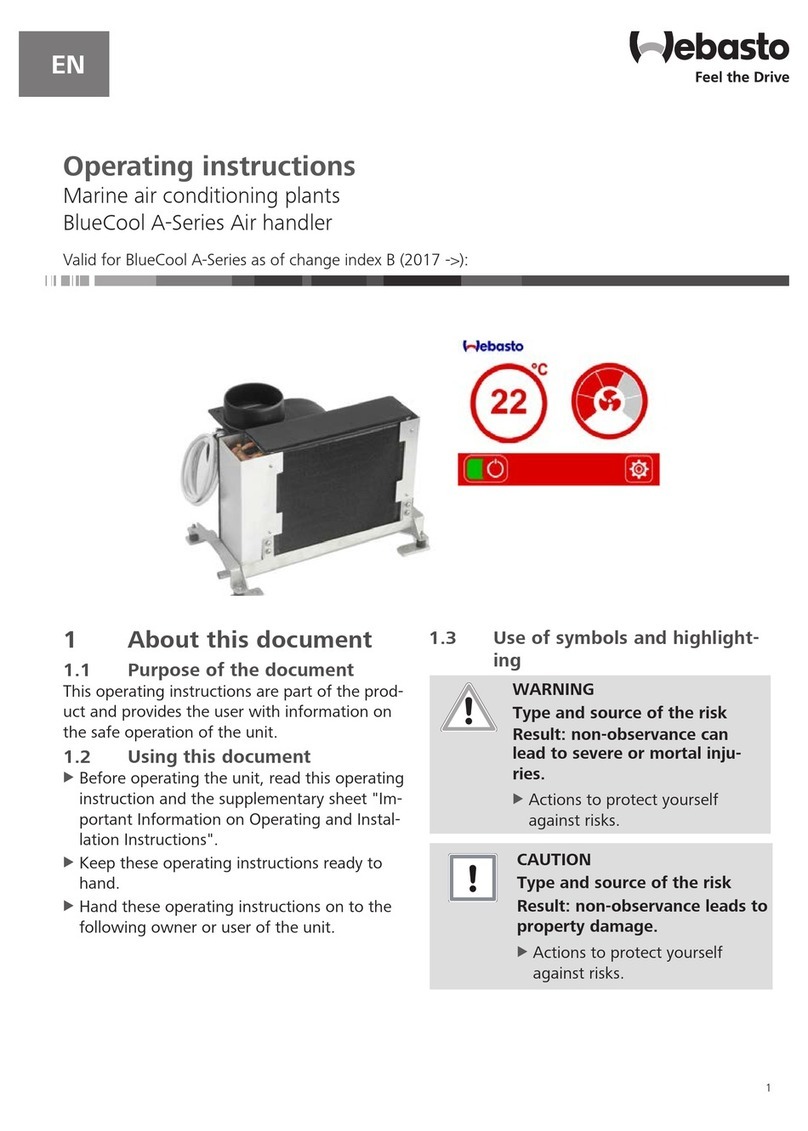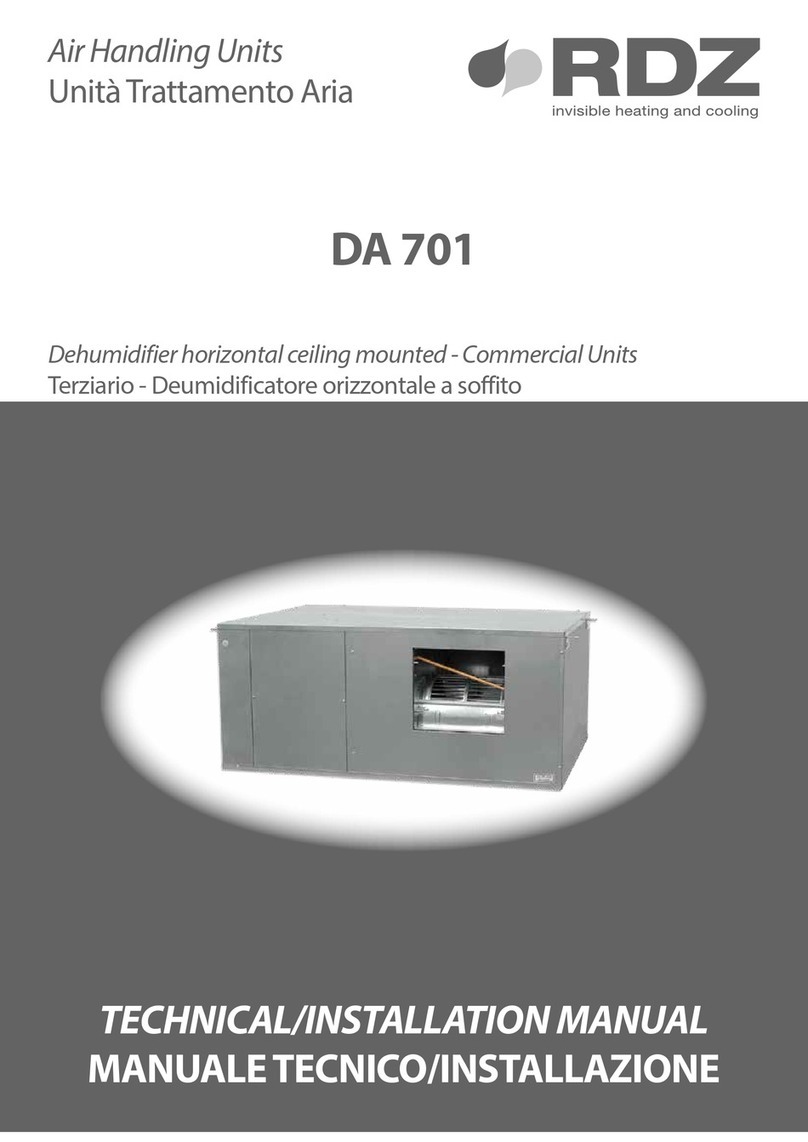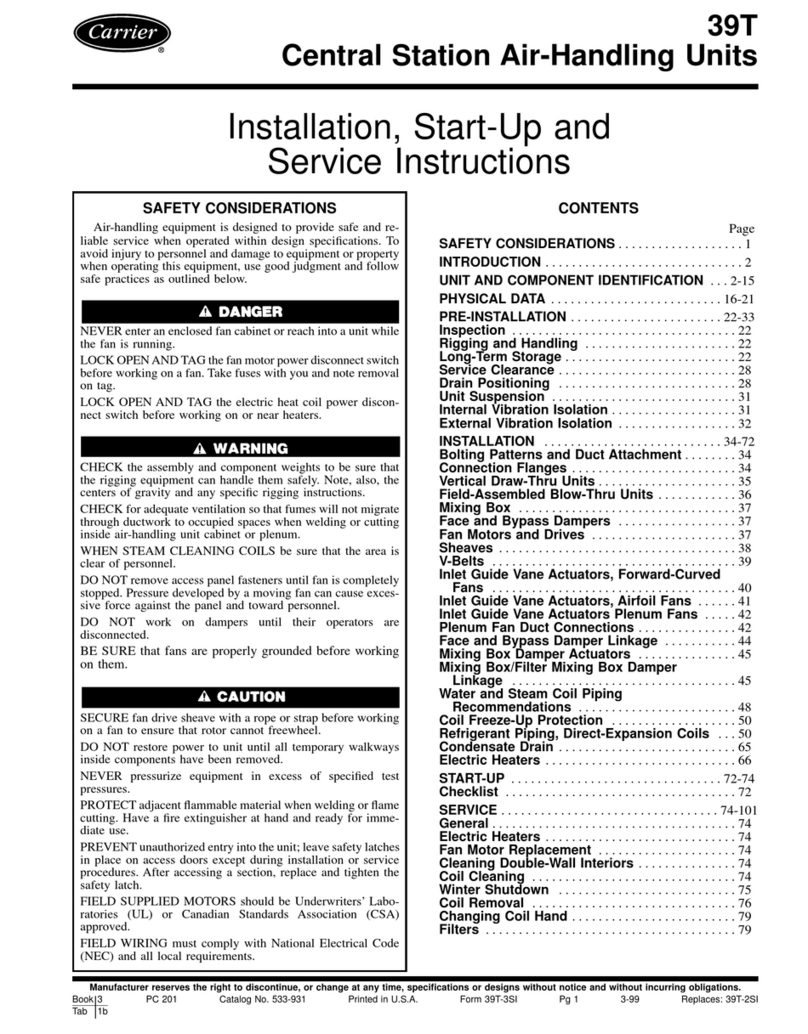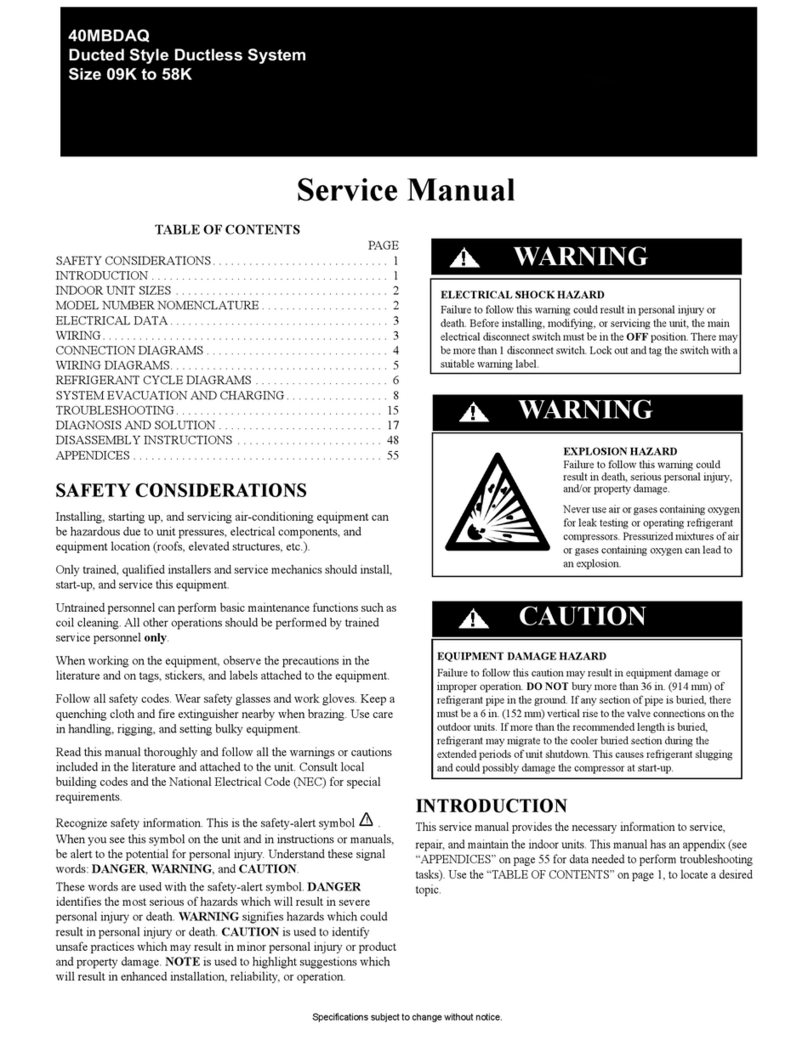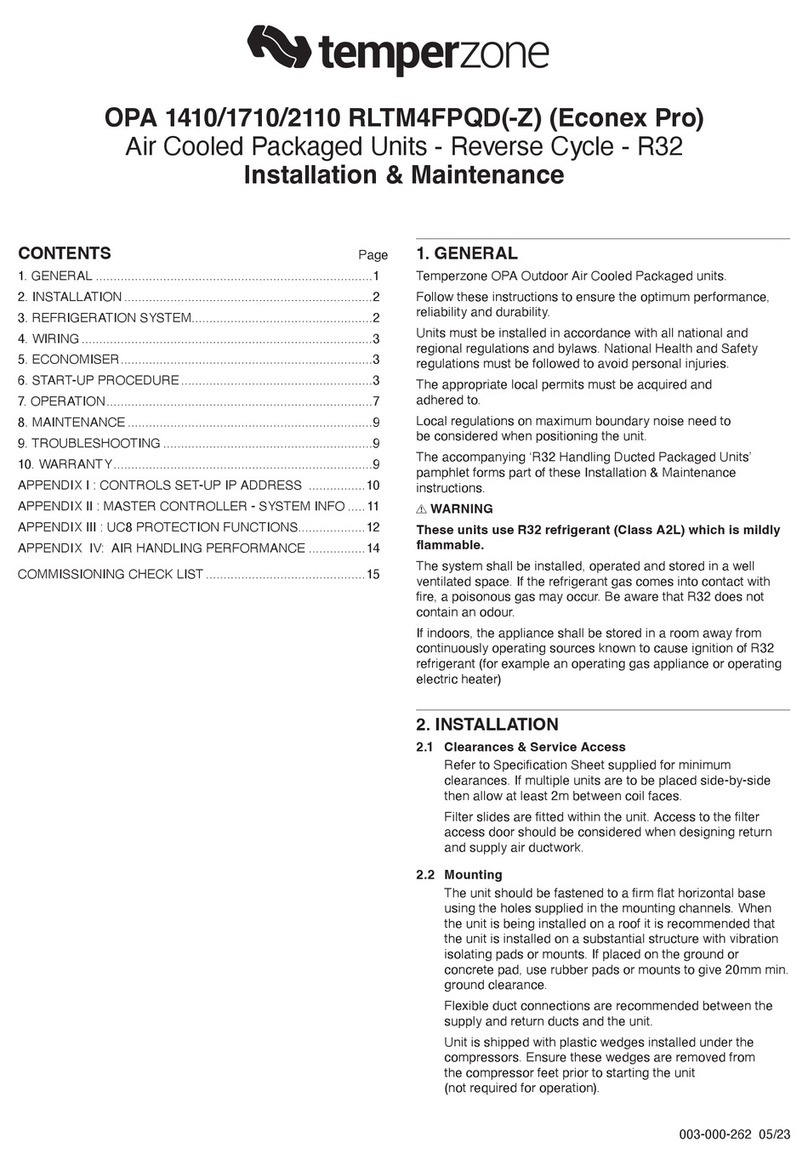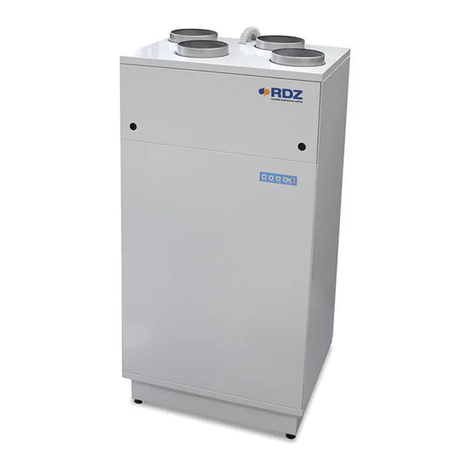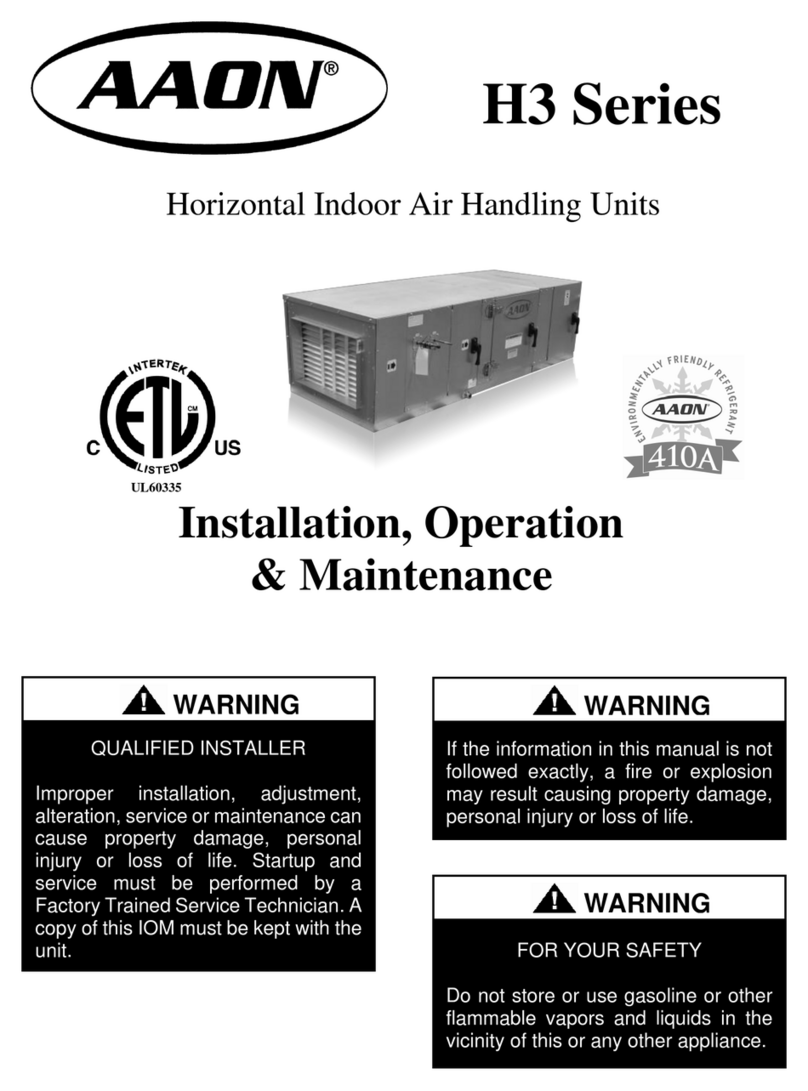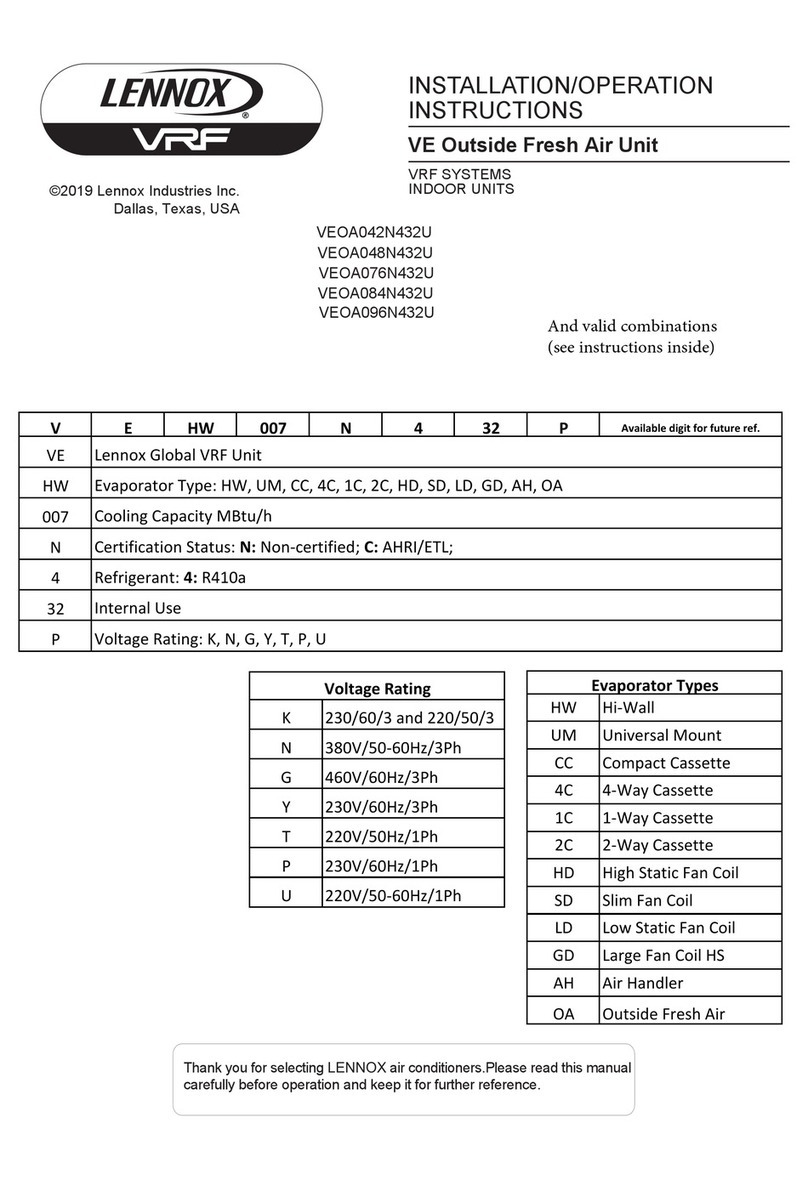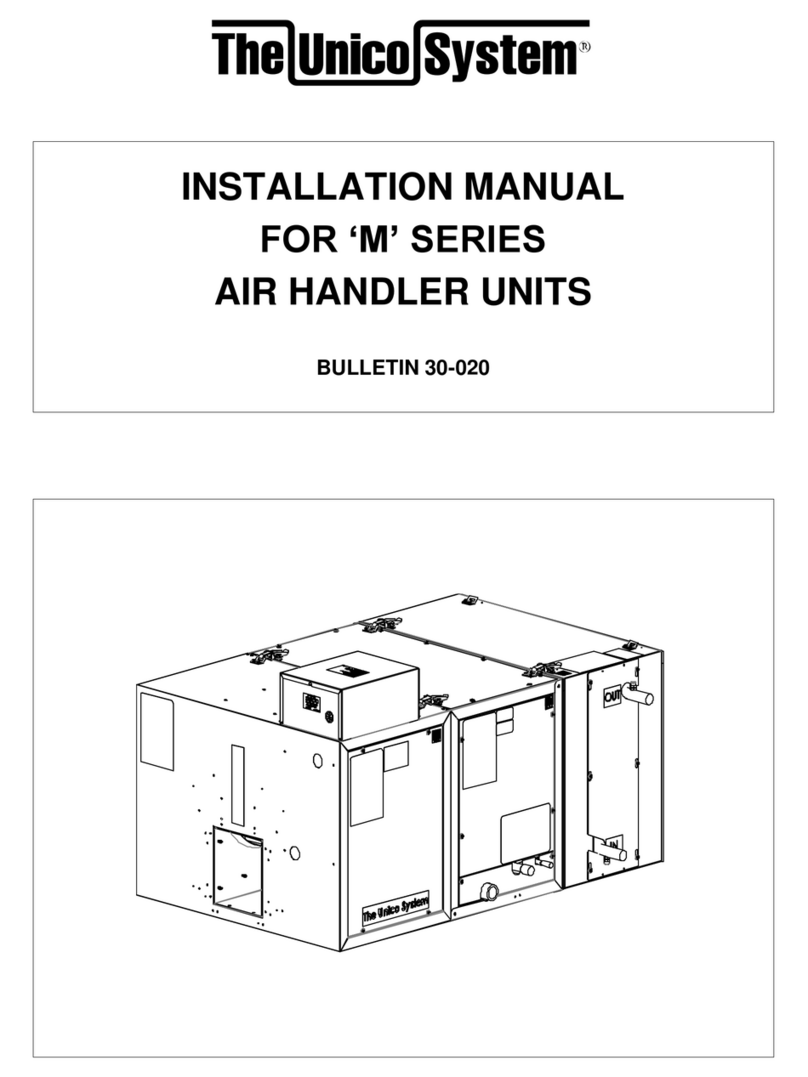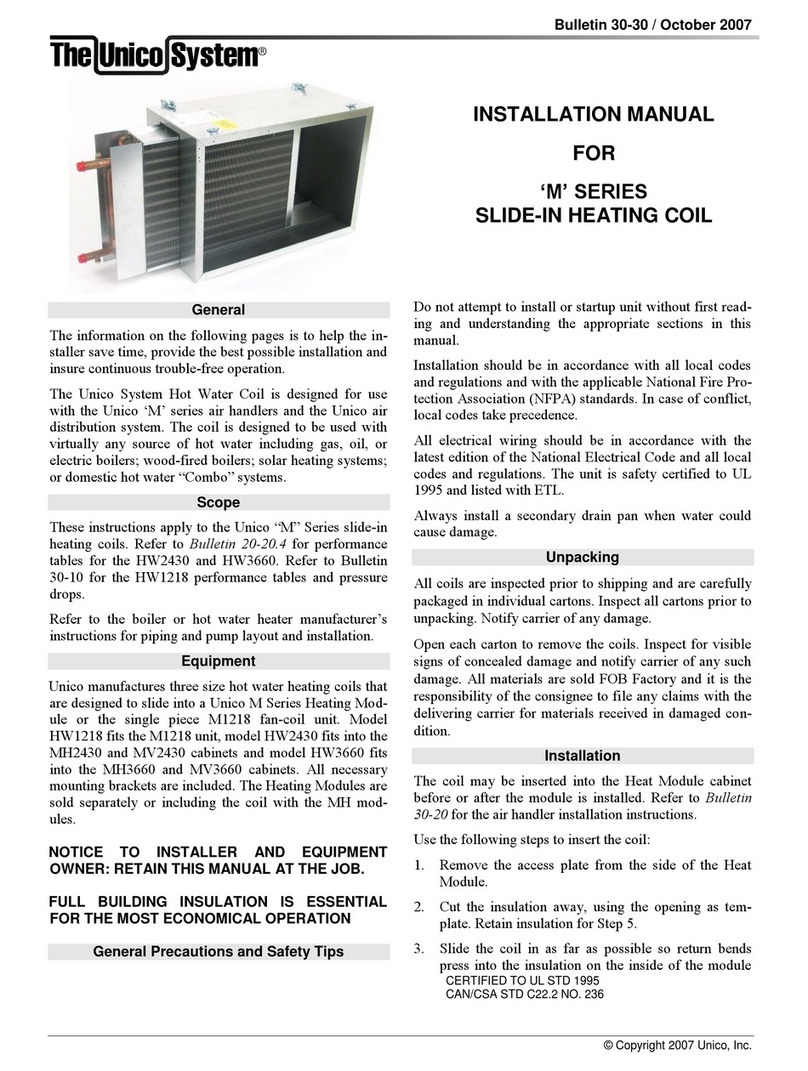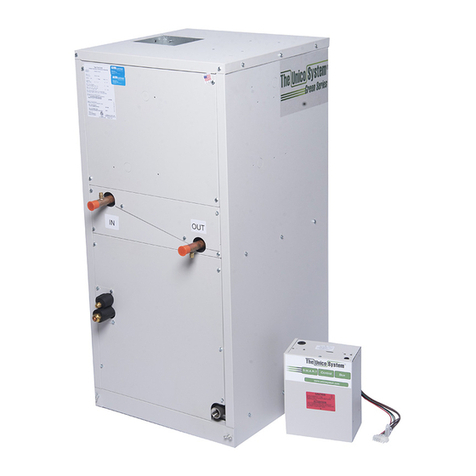
Bulletin 30-20 —Page 9
© Copyright 2014, Unico, Inc.
Restrictor Plate (single-speed motors only). The
single speed (non-ECM) blower include a restrictor plate
to fine-tune the airflow. The purpose of the restrictor plate
is to eliminate objectionable outlet noise because the
blower is delivering more air than required. In most cases
where the maximum airflow is required, the restrictor may
be omitted.
The restrictor plate is used to set the system airflow (see
Fig. 18). The full open position corresponds to the highest
airflow the installed duct system will allow. Set the re-
strictor plate to the full open position and measure the sys-
tem airflow. The required system airflow is 200-250 CFM
per nominal ton (27-34 L/s per nominal kW). Measure the
motor amperage and use this to ensure the 200-250 CFM
per nominal ton (27-34 L/s per nominal kW) has been
achieved. If elevated sound levels are noticed at the out-
lets with more than 250 CFM per nominal ton (34 L/s per
nominal kW), the airflow may be reduced with the restric-
tor plate. Always measure the system airflow by the motor
amperage (see Table 4). Refer to the airflow-amperage
charts provided with the blower.
Figure 18. Restrictor Setting
Note: Do not use restrictor plate to adjust
plenum static pressure. Adjust the restrictor
to the proper amperage. This will assure
proper airflow.
Table 4. Approximate Amperages at Given Airflows
* multiply by 1.1 if 208V
†for more exact airflow use the chart included with the blower
Attach main duct. Attach the plenum to the adapter by
inserting it over the supply adapter. If using sheet metal
duct, use three (3) or four (4) equally spaced sheet metal
screws or nails to secure the duct to the supply adapter.
Then tape around the seam with UL 181A aluminum tape.
Then wrap the outside of the plenum adapter with the sup-
plied blanket insulation and secure the insulation seams
with UL 181A tape.
Return Air Duct. Unico supplies a return duct system
but any return duct system is acceptable provided the
pressure loss does not exceed 0.15 inches of water (37 Pa),
including filters. The return duct should have at least one
90° bend between the unit and filter box to reduce sound
transmission directly from the unit.
The Unico Return Duct system has a single return that in-
cludes the return air box with filter, the return duct, and
the return air adapter (refer to Fig. 3). Multiple returns or
extra-long returns are possible so long as the maximum
pressure loss is not exceeded. For vertical installations or
tight spaces it may be necessary to fabricate a return duct
system from duct board or lined metal.
The typical return duct is 10-foot (3 m) in length so it may
have to be cut to avoid bunching if the distance to the unit
is significantly less than 100-inches. The minimum length
should be 7-feet (2 m). When given a choice, the shorter
distances should be avoided as this may increase sound
transmission from the unit.
Cut an opening for the return box as specified in Table 1.
For the 2430, 3036 and 3642 if the joists or studs are on
16-inch (410mm) centers, there is no need to build a frame
to hold the return air box. Otherwise, it will be necessary
to construct a frame around the opening. For the 4860 re-
turn, it will almost always be necessary to cut and header
at least one joist.
Center the return air box so the filter frame flange covers
all the gaps and make sure the flange is flush against the
wall or ceiling. Install the return air box against the frame
using nails or screws.
Screw holes are provided in the return air box. Use the
holes nearest the corners. The other holes are for mount-
ing the filter grille. See Fig. 19.
Figure 19. Return Air Box and Filter
